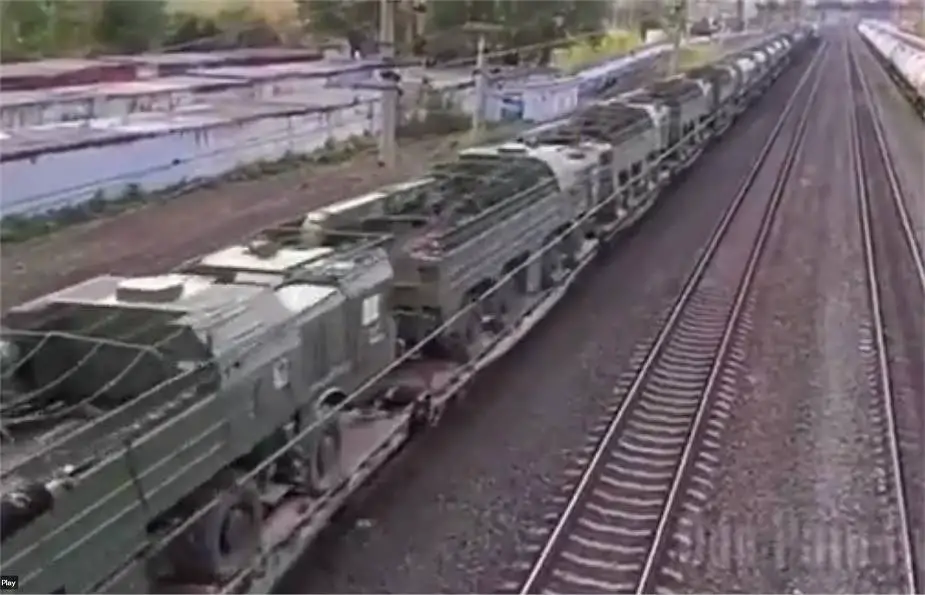Russia sends more Iskander ballistic missile systems to Kherson region to stop Ukrainian offensive
According to a video published on Twitter Social Network, on October 1, 2022, Russia strengthens its tactical missile power by sending new units of Iskander mobile short-range ballistic missile systems. Citing information released on Twitter, Iskander transported by train are on the way to the Kherson region.
Follow Army Recognition on Google News at this link

Russia reinforces the military group with Iskander missile systems in the direction of Kherson. (Picture source video footage Twitter )
The Kherson region is a province in southern Ukraine, claimed and mostly occupied by Russia. It is located just north of Crimea. On Sunday, October 2, 2022, Ukrainian President Volodymyr Zelenskyy announced that Ukrainian armed forces have liberated the urban-type settlements of Arkhanhelske and Myrolyubivka in the Kherson region.
Citing information from the Ukrainian Ministry of Defense, Ukrainian forces broke through Russian lines and made new advances in the southern Kherson region, even as they continued developing their rapid offensive in the eastern part of the country.
Due to this Ukrainian offensive in the Kherson region, the Russian army wants to strengthen its military capabilities in this region and stop the advance of the Ukrainian army. On September 30, 2022, Russian President Vladimir Putin recognized the independence of the Kherson and Zaporizhzhia regions.
The Iskander is a mobile short-range ballistic missile system that entered into service with the Russian army in 2010 to replace the old SS-21 Tochka-U tactical ballistic missile system.
An Iskander battery includes a command and staff vehicle, life support vehicle, transporter loader vehicle (TLV), mobile data processing center, maintenance vehicle and Transporter Erector Launcher (TEL). There are four versions of the system, the Iskander, Iskander-M, Iskander-E, and the Iskander-K.
The Iskander-M and Iskander-K are deployed by the Russian armed forces to conduct combat operations in Ukraine. The Iskander-M carries two 9M723 quasi-ballistic missiles able to reach a land target at a range of up to 400 km. The missile It can carry conventional and nuclear warheads up to 700 kg and employs a maneuverable re-entry vehicle (MaRV) and decoys to defeat theater missile defense systems.
The Iskander-K can carry various types of cruise missiles including the 9M728 which reach a land target at a range of up to 500 km. The missile carries a conventional 500 kg warhead or nuclear warhead with a yield of around 10-50 kT. The Iskander-K can also launch the 9M729 cruise missile which has a maximum firing range of 500 km. This missile is able to carry a low-yield nuclear warhead of around 10-50 kT. It can be also fitted with a conventional warhead with around 500 kg of explosives, as well as cluster, fuel-air explosive, and bunker-busting warheads.




























